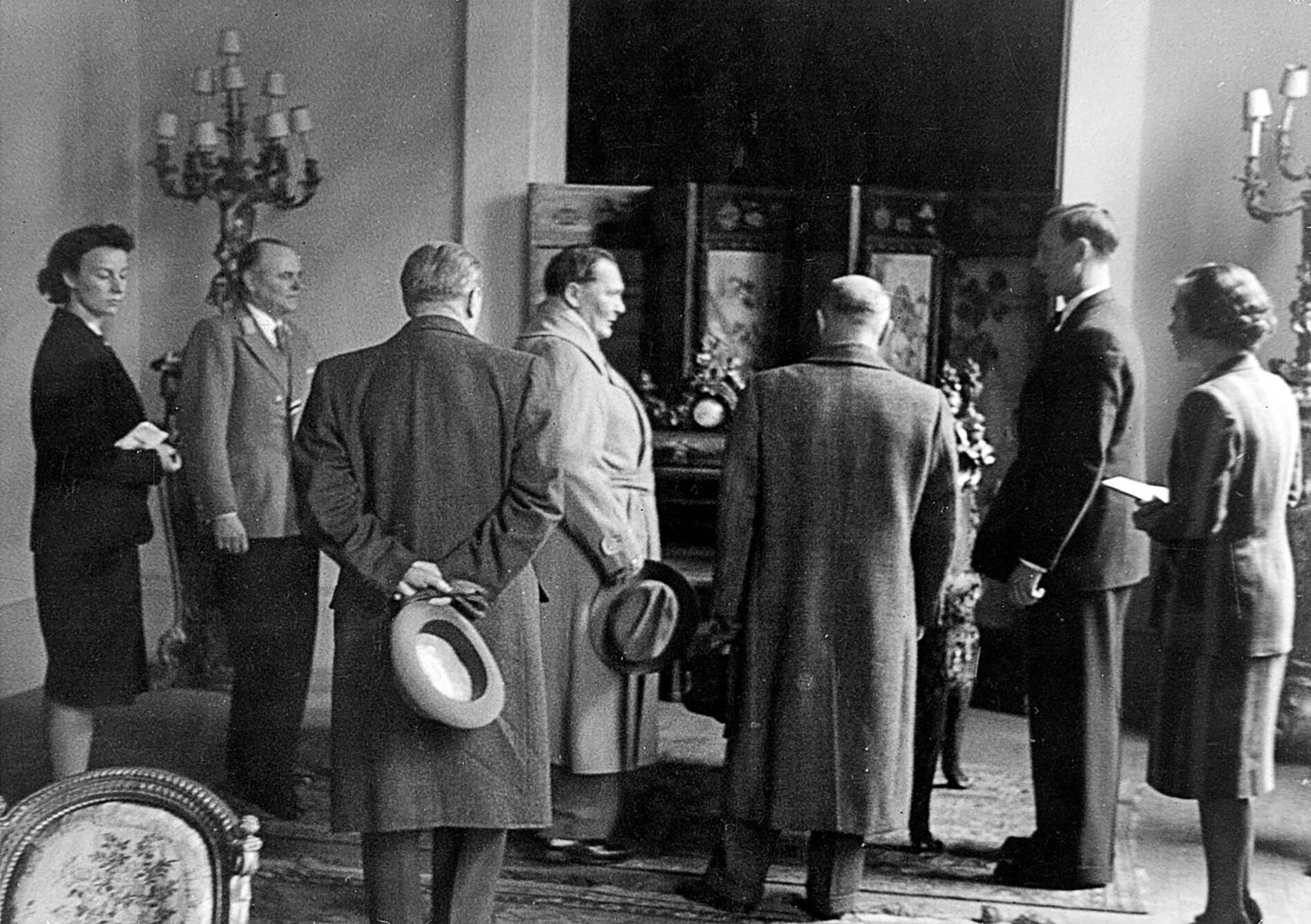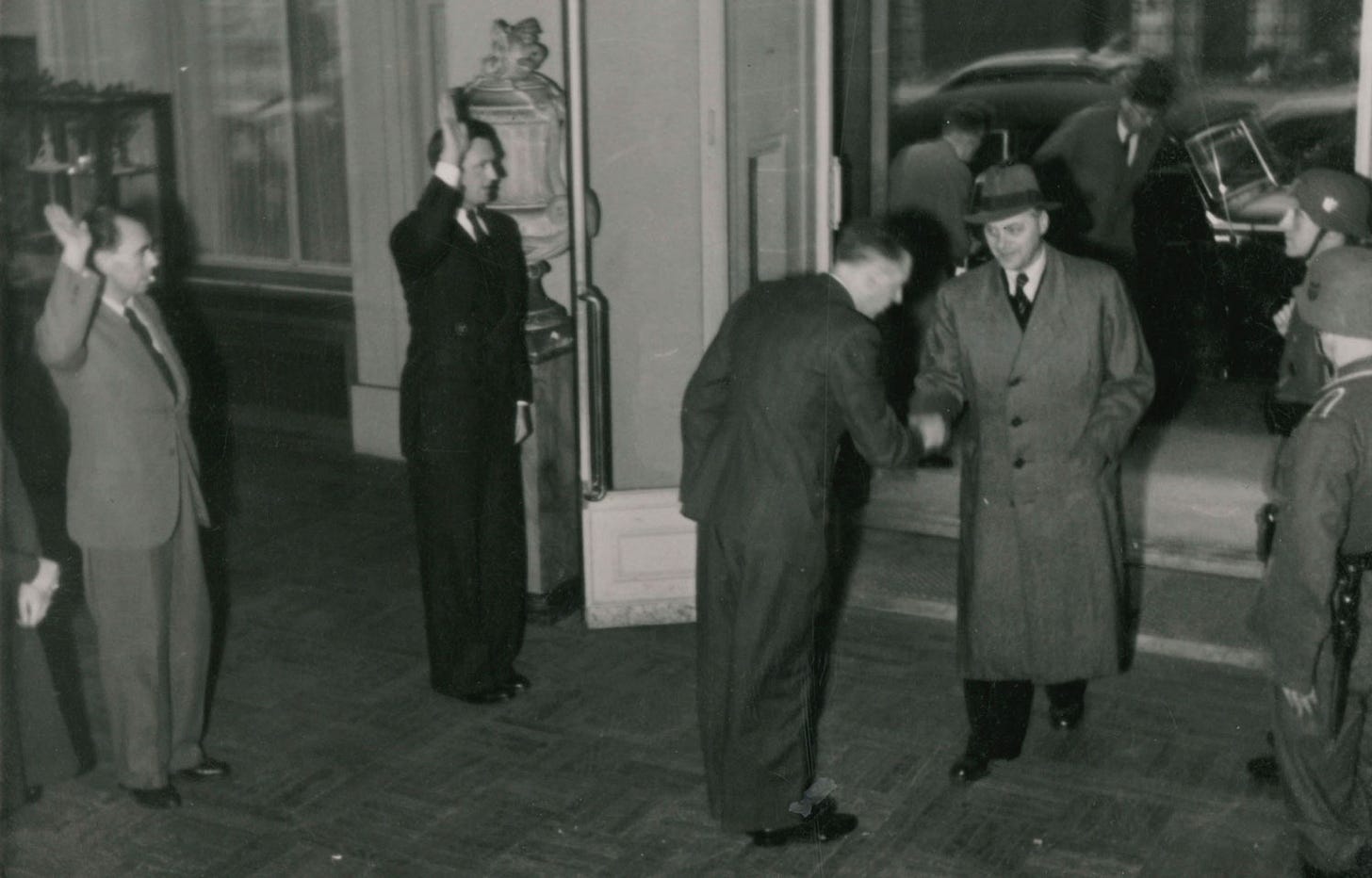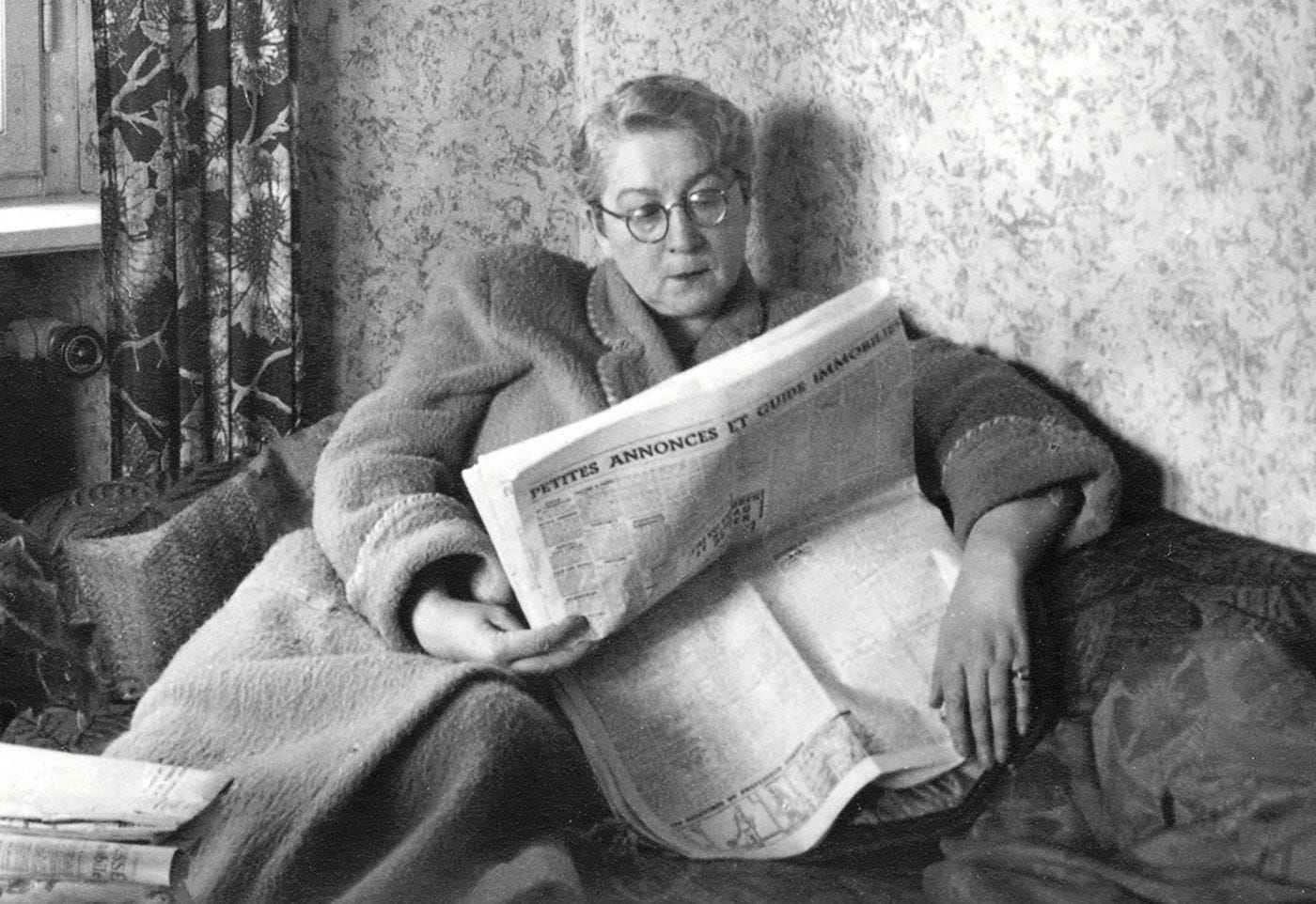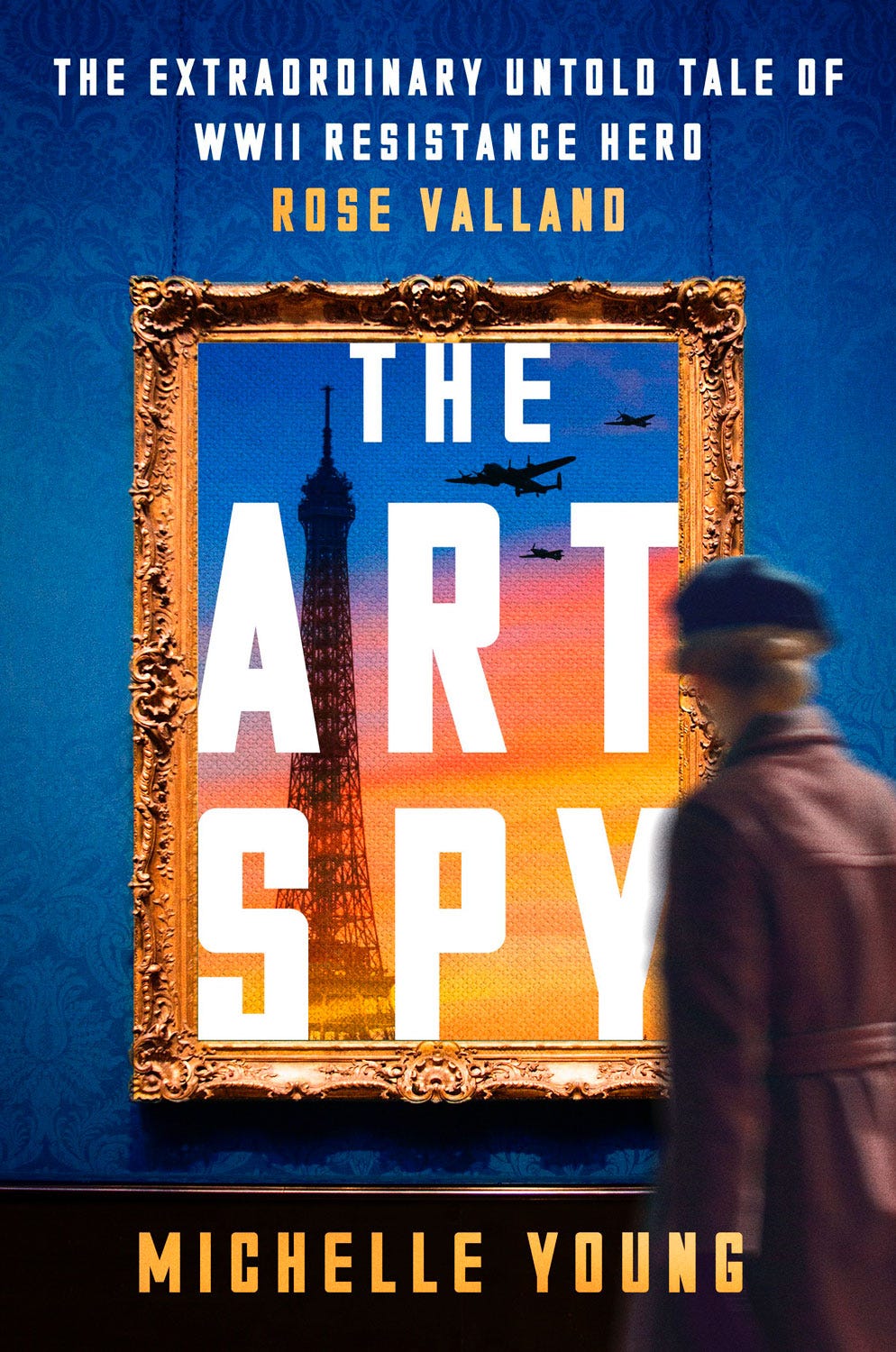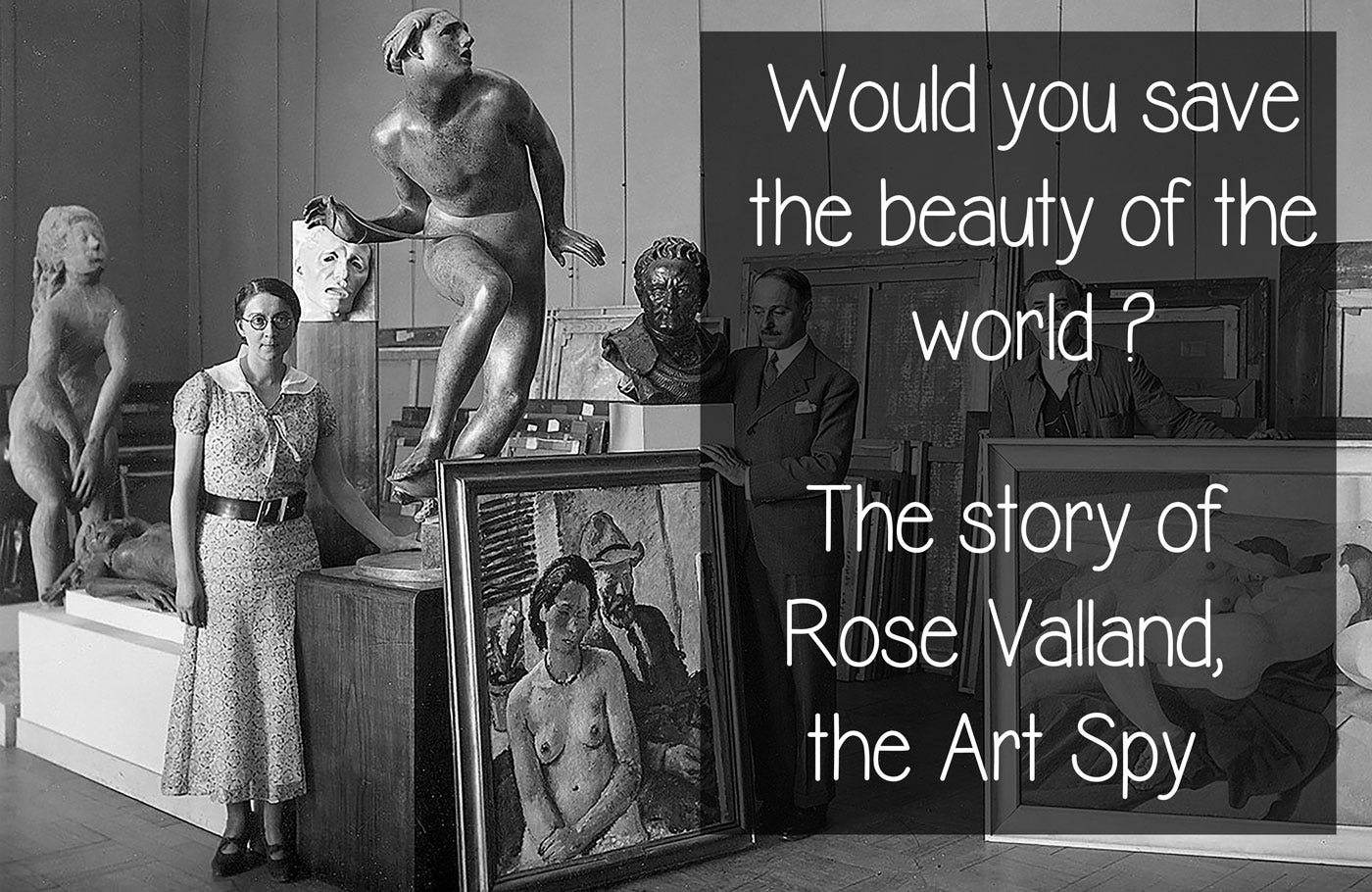
We are in 1940 Paris, in a small museum near the Louvre, the Jeu de Paume. This is not a movie set but the real world.
Marshal Pétain, a WW1 hero, shook hands with Hitler. He leads the government and makes this announcement:
It is with honor and to maintain French unity ... that I enter today on the path of collaboration.
What do you do? Smile and shake hands, and collaborate with the new order?
Remember that you, dear reader, benefit from insight and know what comes next.
But this is 1940, and when you look into the past, you see the 'Great War' that started when you were 16.
War does not look like grainy black-and-white images. While you've never been near trenches, you saw an entire generation of young men wiped out.
You know that the Germans never accepted they were the aggressor and that they lost.
They spent years finding scapegoats and elected a failed artist who wanted revenge on the world.
A man who saw himself as a misunderstood genius and who violently despised modern artists as being degenerate Jews and Communists.
This is not a what-if story, where all it takes to stop atrocities is one bullet into a short, brown-haired man frothing at the mouth about the superiority of a tall, blond, and blue-eyed race.
We are in Paris in 1940, the Germans have arrived, and it is time to make difficult choices.
Heroes come in all shapes and colors

One is not born a hero, nor does one look like one. Being a hero is about choosing one way over another, changing the course of things, often at great personal risk.
We now travel further in the past, to provincial France in 1898, to a modest blacksmith's family living in a small town. The baby girl is named Rose.
It still was a time when women were expected to be housewives. However, young Rose had bigger dreams and went on to study for twenty years.
That meant attending Paris and studying at the Fine Arts School, the University, and the Ecole du Louvre. Along the way, she learned the German language.
The provincial girl blossomed into a highly qualified teacher, artist, art historian, and archaeologist.
Aged 34, she entered the Jeu de Paume museum as an unpaid volunteer and later assistant curator.
Now, it's 1939, and the curator leading the museum is unwell. Rose is, in practice, in charge but still unpaid.
This is not a pastime for a wealthy offspring; it's her calling, and she goes by giving private lessons after work.
She helps when the treasures of French museums are sent away to safety and returned to the Jeu de Paume.
Nazis arrive in your museum
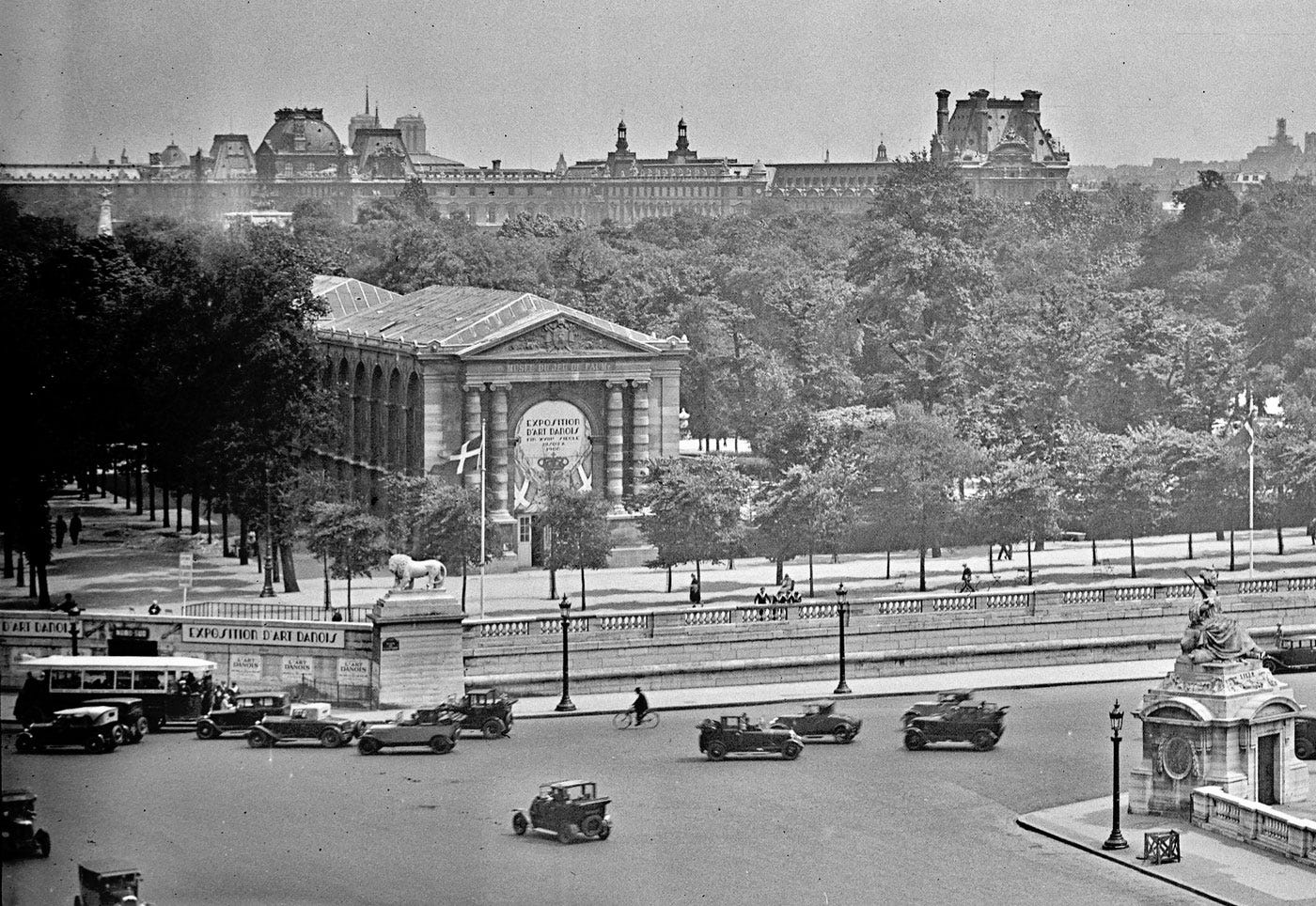
Dear reader, this is decision time. The director of the Louvre, who had spearheaded saving entire museums from Nazis, is not allowed to come close to the Jeu de Paume.
The last thing the Nazis want is for art historians to see—and record—what they are up to.
You know, but let me refresh your memory: just in Paris, steal the contents of 38,000 apartments—from Jewish families—down to the lightbulbs, curtains, and milk jug.
Send people and their possessions into wagons to never be seen again. Four years later, the quantity of stolen goods would fill an entire stadium.
Adolf Hitler and Hermann Göring are voracious collectors competing with each other to steal the finest art collections.
They organized the worst art theft in history, and the Jeu de Paume is earmarked as its central depot.
Our unpaid assistant curator sees the Nazis take over. That's you, dear reader.
The Nazi in charge speaks French fluently, and he takes a good look at you. He sees a harmless 'old girl'—unmarried, unassuming, unpaid—and allows her to stay.
Having an art historian on site will be paramount to record what is taken, from whom, and where it goes.
The Louvre director asks you to stay and record everything.
Decision time: run or stay?
Picture this: you are rubbing shoulders with Nazi top brass.
They put you in charge of the phones, and you must avoid any slip of the tongue or expression that will betray that you understand German.
Days after taking over, they turned the museum into an upscale art gallery. A special visitor is on his way, Hermann Göring.
And Rose walks around with her little notebook. One of the Nazis sees that and firmly closes it.
Rub shoulders with Nazi leaders
The Reich Field Marshal sips Champagne while walking around a museum full of masterpieces he can choose from without worrying about paying for them. He likes that so much that he has visited it over twenty times.
On another occasion, the visitor is Alfred Rosenberg, leading the Nazi cultural plunder.
Note that in the left corner, someone refuses to salute the monster.
This is Rose, who spent four years surrounded by war criminals, risking her life every minute of every day.
Steal negatives, take them home, copy them, and return them in the morning. Walk every other day to the Louvre carrying documents recording Nazi art theft for the Louvre director.
The Nazis sack you, but you keep returning to your museum every time.
You get caught in the act of spying by Göring’s art dealer.
He looked at me straight in the eye and told me I could be shot.
I calmly replied that no one here is stupid enough to ignore the risk.
She did not run away. Would you do that?
How far would you go to save the beauty of the world?
A gripping story waiting to be told
Being an art spy during the Second World War is only one facet of Rose's achievements. She also went to Germany as a French Army Captain and a US Army Lieutenant Colonel to retrieve stolen artworks.
She received the Presidential Medal of Freedom, the Legion of Honor, and the Resistance Medal.
Finally, she became one of the first French women curators. Once retired, she continued searching for stolen art.
The journalist interviewing her describes:
Tall, coquettishly made up, she appears surprisingly young, in spite of her 80 years.
As soon as she talks of her museum, she abandons her modest reserve, rises and lights up.
The following year, one of the most highly decorated French women was buried almost anonymously, forgotten.
She wrote a book, 'Le Front de l'art,’ published in 1961. The book was adapted into the movie The Train but never sold well.
One potential reason is that the movie is based on a half-dozen gripping pages, as Rose never wrote her book to put herself in the limelight.
The book is about saving artworks, not about the adventures of a hero spying under Göring’s nose.
Ask yourself: how many spies got to be face-to-face with the top echelons of the Third Reich?
Who was the only person who could inform the Allies about the location of the art treasures—to avoid bombing them and retrieve them?
That is where the modest reserve that served her well during the war hid the passion underneath, waiting to be lit up.
Art historians can read between the lines, feel the sarcasm and steely nerves, and understand the scale of her achievements.
However, Rose's story needed to be told to a broader audience.
As a Louvre School student, I probably sat in the same seat as her in the auditorium. That's where I discovered her story.
During the pandemic, I tried to share her story with the English-speaking public and correct the caricature that movies depict.
The article is Rose Valland: Art Historian Turned Spy To Save Art From Nazis.
That led to an author researching Rose Valland to contact me.
The Art Spy: The Extraordinary Untold Tale of WWII Resistance Hero Rose Valland
Michelle Young combed through archives, finding important documents in the backs of boxes that had not been touched since WW2.
We met and discussed episodes in Rose's life. She explained her doubts about a particular event, whether it was the 17th or 19th of April. I asked her if it mattered, and she said, “Yes, it does, to me.”
I realized she was a fellow member of the Perfectionist Club and wanted everything to be based on fact.
She also told me things I did not know, so I happily agreed to help however possible.
Since Rose never cared for self-promotion and had been forgotten and unfairly depicted, she needed an advocate.
Someone who could spend years digging in archives. A writer who could take on Rose's shoes and walk on a tightrope:
Craft a 100% true story while being a gripping read.
Having had a chance to preview her book, I am more than happy to confirm that if you want to meet Rose Valland and be astonished by her story, you need only preorder her book.
https://michelleyoungwriter.com/theartspy
When it arrives, you will enjoy a Moment of Wonder.
Rose Valland: Art Historian Turned Spy To Save Art From Nazis





